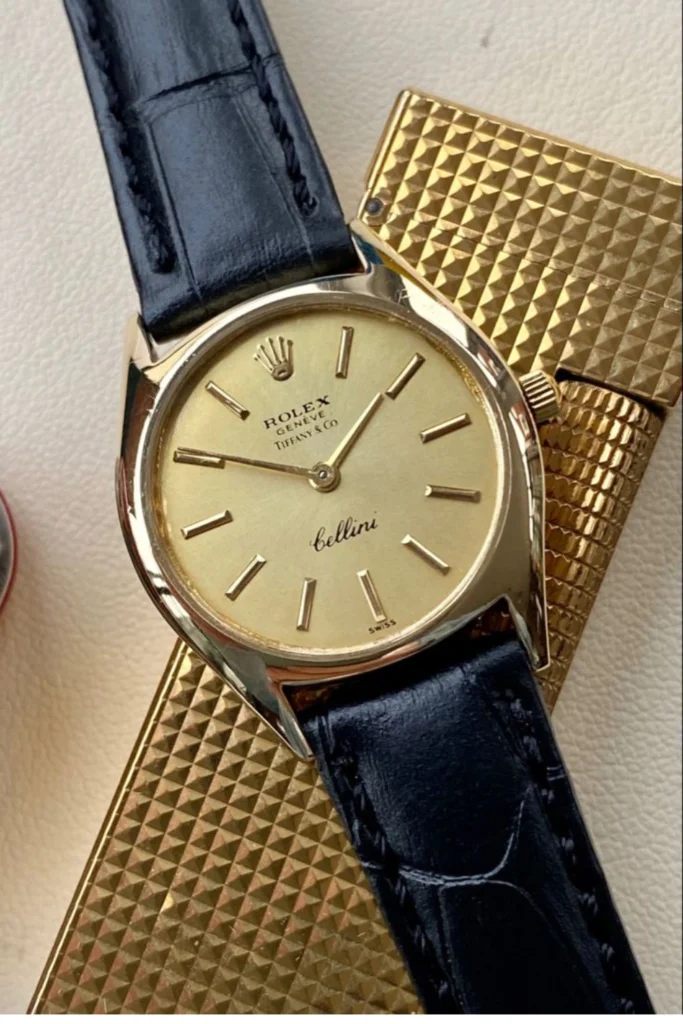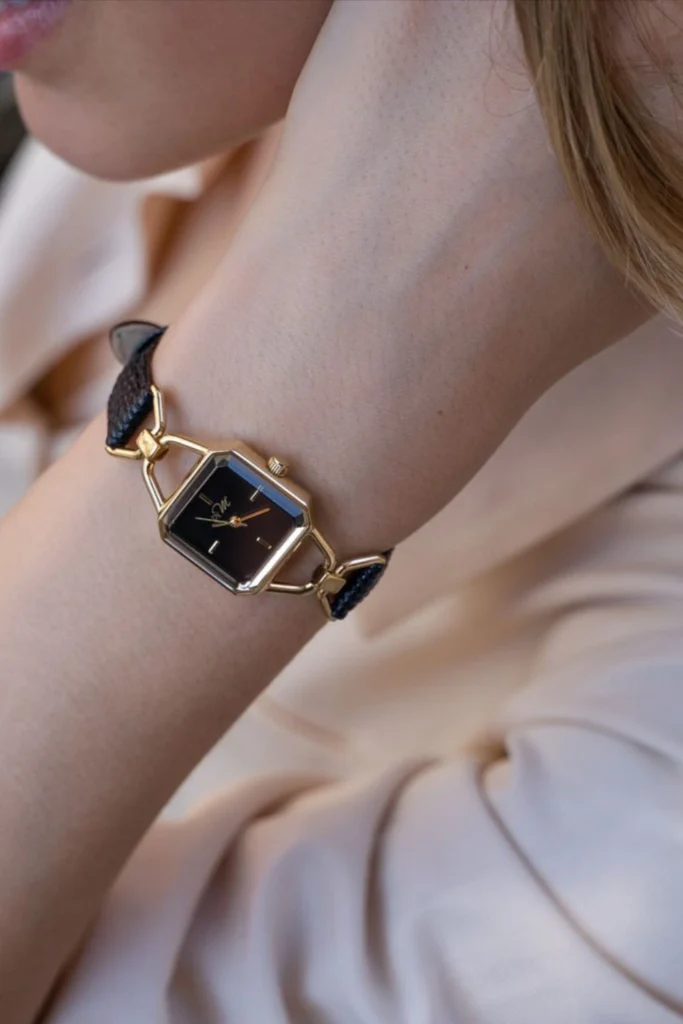Embark on a thrilling journey through the ticking corridors of time as we unveil the mystique of vintage watches in 2024! Picture this: a world where every watch isn’t just a timepiece but a statement, a piece of history strapped to your wrist. Get ready to be swept away as we delve into the realm of horological masterpieces, exploring five timeless classics that are redefining elegance and style.
In this adrenaline-packed edition, we’ll unlock the secrets of vintage watches that transcend eras, where precision meets panache, and craftsmanship is an unwritten love letter to time itself. Whether you’re a seasoned collector or just stepping into the fascinating world of vintage timepieces, this ride promises to be nothing short of exhilarating.
Understanding Vintage Watches
When we talk about vintage watches, we’re delving into a realm that marries history with style and craftsmanship. As a collector or enthusiast, it’s essential to comprehend the allure and the nuances that define these timepieces.
Definition and Significance
Vintage watch – this term sparks debates regarding its exact definition, but it broadly relates to timepieces that have passed a certain age, typically 20 to 30 years old. The significance of a vintage watch lies not just in its age but in its historical context, aesthetic, and mechanical ingenuity. Each vintage watch carries its own story, a slice of history encased in a blend of art and technology.
Why Choose Vintage Watches?
As a watch enthusiast, I choose vintage watches for a myriad of reasons:
- Historical Value: Each vintage watch is a testament to the era it was made in, reflecting the design trends and technological capabilities of its time.
- Craftsmanship: They represent a time when watches were often handcrafted with meticulous attention to detail.
- Unique Character: Unlike mass-produced modern watches, vintage watches offer uniqueness with often limited quantities.
- Investment Potential: Many vintage watches can be a good store of value, sometimes appreciating over time due to their rarity and demand.
- Sentimental Reasons: They can be heirlooms or personal tokens that carry sentimental value, connecting me to a past generation.
Appreciating vintage watches is as much about the emotional connection as it is about their material value. If you are also interested in vintage hat styles, have a look at our article: “13 Brilliant Styles of Vintage Hats“.
Iconic Vintage Watch Brands

In my exploration of timepieces, I’ve come across numerous brands, but few have left such an indelible mark on the history of horology as these iconic vintage watchmakers. They’ve set benchmarks in design, precision, and innovation, influencing generations of watch enthusiasts.
Rolex’s Legacy in Timekeeping

Rolex is synonymous with endurance and timeless luxury. The Rolex Datejust, for example, is a testament to the brand’s enduring design and functionality. My encounters with vintage Rolex timepieces have always impressed upon me their ability to remain fashionable and accurate through the decades.
Omega’s Historical Contributions

From pioneering space endeavors to timing the world’s most prestigious sporting events, Omega is another name that resonates with me. The brand’s commitment to precision and its rich history, including the creation of watches like the Omega Speedmaster, which has a storied presence in space exploration, mark Omega’s substantial impact in watchmaking.
Patek Philippe

As I delve into high horology, Patek Philippe continually emerges as a pinnacle of craftsmanship and heritage. Their watches are not merely timepieces but heirlooms that carry with them stories and prestige from generation to generation.
Seiko

Moving on to Seiko, I’ve always admired their democratization of quality timekeeping. This brand has introduced innovations that have shaped the watch industry, such as affordable automatic movements and robust diver’s watches, embodying the ingenuity of vintage watch craftsmanship.
Jaeger-LeCoultre

Lastly, my appreciation for Jaeger-LeCoultre’s role in the horological world cannot go unstated. As pioneers of fine watchmaking, they’ve crafted timepieces of exceptional elegance and complexity, including the iconic Reverso, which combines a sporty demeanor with artisanal excellence.
The Art of Buying Vintage Watches

In the realm of vintage watches, my expertise centers on the ability to authenticate pieces and recognize their historical significance. Here’s how I approach the process.
Researching and Authenticating
When I research a vintage watch’s authenticity, I focus on its provenance and originality. Original parts are a key value point. I look for any replacement parts, which can diminish a watch’s value, and verify the serial numbers against manufacturer records when available.
It is critical to assess the wear on the watch, as it can tell a story of its history and care. Learning to spot redial, a watch face that has been incorrectly refurbished is also essential. Assistance from experts and utilizing resources can offer more detailed insight into real versus counterfeit watches, as highlighted in this collector’s guide on buying vintage watches.
Popular Vintage Watch Brands and Models
I pay particular attention to the most sought-after brands and models. Rolex and Omega are perennial favorites, each with iconic lines like the Rolex Submariner and the Omega Speedmaster. The Patek Philippe Calatrava and certain vintage Heuer chronographs also stand out due to their design and historical relevance.
The worth of a specific model can greatly vary based on its rarity and condition. Information about popular vintage watch brands can significantly help in establishing a baseline for my searches and ensuring I know the hallmarks of quality for these timepieces. For a broader understanding of the market’s most coveted pieces, this buyer’s guide is an excellent resource.
The Art of Selling Vintage Watches

In my experience, the successful sale of vintage watches hinges on thorough preparation and targeting the right buyers. Selling these timepieces isn’t just a transaction—it’s about connecting with those who appreciate the history and craftsmanship.
Preparing for Sale
Before listing my vintage watch, I ensure it’s presentable and fully evaluated. I gather all pertinent documentation, such as service records and original packaging if available. This helps to:
- Establish Authenticity: Authenticity certificates and provenance details increase buyer confidence.
- Determine Condition: I assess the watch’s condition, noting any servicing, wear, and tear or restorations.
I also take high-quality photos from multiple angles to showcase its condition and appeal. This visual sale is crucial, as buyers often make decisions based on first impressions from these images.
Finding the Right Buyer
To find the right buyer, I leverage targeted platforms known for vintage watch sales, like Worthy.com, to reach enthusiasts most likely interested in my particular watch’s history and style. I also consider the following options:
- Auction Houses: Ideally suited for high-value and rare vintage watches.
- Online Marketplaces: I choose reputable sites tailored to collectors and watch enthusiasts.
- Specialist Dealers: They can provide direct sale or consignment options, usually offering expertise and vetted clientele.
Selecting the appropriate platform ensures I am not only selling but also storytelling, connecting my watch with a buyer who values its legacy as much as its functionality.
Maintenance and Care of Vintage Watches

Caring for vintage watches involves meticulous habits and awareness of their delicate nature. My routine combines daily care, prevention against dust and moisture, and movement maintenance to ensure the longevity of these timeless pieces.
Daily Care Tips
Every day, I ensure my vintage watch remains in top condition by wiping it with a soft, lint-free cloth to remove oils and dirt. I take special care to wind the watch gently if it’s mechanical, as overwinding can cause unnecessary stress on the internal components.
- Winding: Wind mechanical watches gently until resistance is felt.
- Cleaning: Use a microfiber cloth for daily cleaning.
Preventing Damage from Dust and Moisture
I always check the integrity of the watch’s case and seals to prevent dust and moisture intrusion, which can compromise the movement and aesthetics. For added safety, I keep my vintage watches away from high-humidity environments and make sure they are stored properly when not in use.
- Seals: Regularly check the case and seals.
- Storage: Store in a dry, temperature-controlled environment.
Watch Movement Maintenance
Regular servicing is crucial for the movement’s health; I follow the manufacturer’s recommendation or consult with a trusted watchmaker. Oil used in the movement can dry out, and parts may wear down over time, so professional cleaning and lubrication help prevent these issues.
- Servicing: Adhere to a consistent servicing schedule.
- Professional Care: Seek a qualified watchmaker for maintenance.
By implementing these practices, I help preserve the function and beauty of my vintage watches, ensuring they can be appreciated for years to come.
FAQ about Vintage Watches
How can you determine the authenticity of a vintage watch?
To verify the authenticity of a vintage watch, I examine its movement, signatures, and serial numbers against known reference materials. Inconsistencies in these areas often raise red flags about the watch’s originality. Further confirmation might involve consulting experts or specialized services.
What factors influence the value of vintage watches?
The value of vintage watches is influenced by factors such as rarity, manufacturer prestige, the condition of the watch, its history or provenance, any unique features, and the presence of original parts. Watches with fewer previous owners are typically more desirable.
What are the key characteristics that define a watch as antique?
An antique watch is typically over 100 years old, showcasing historical significance, rarity, and exceptional craftsmanship. Factors include age, materials, mechanical movements, and brand/model collectibility, with well-preserved conditions enhancing value.
How do you properly care for and maintain vintage watches?
Proper care for a vintage watch includes regular servicing, gentle cleaning, and avoiding exposure to extreme elements. Mechanical watches require more attention due to their intricate manual or automatic winding mechanisms.
If you liked our article about vintage watches, feel free to leave us a comment below.


